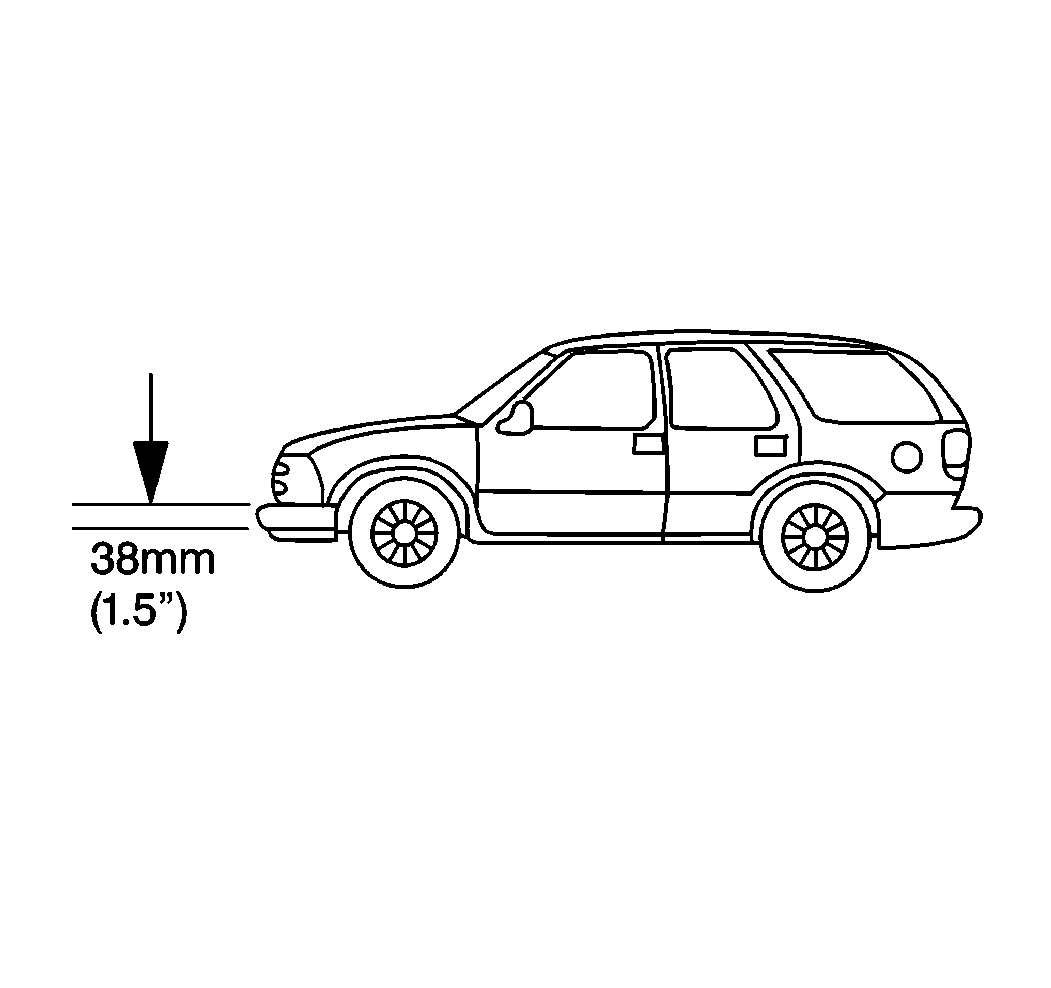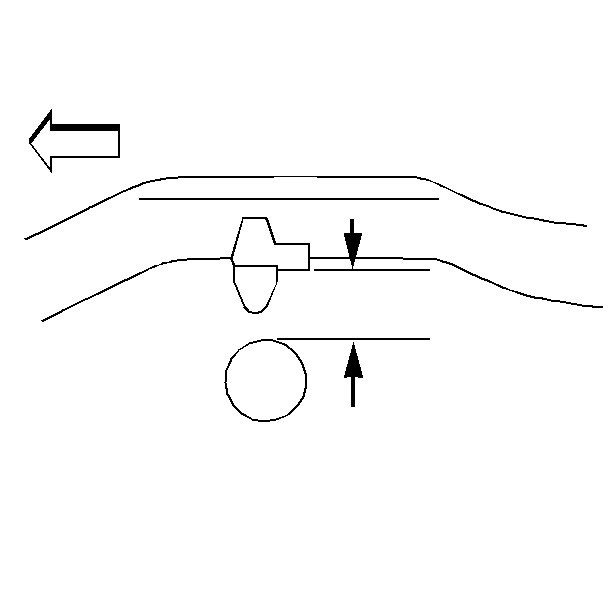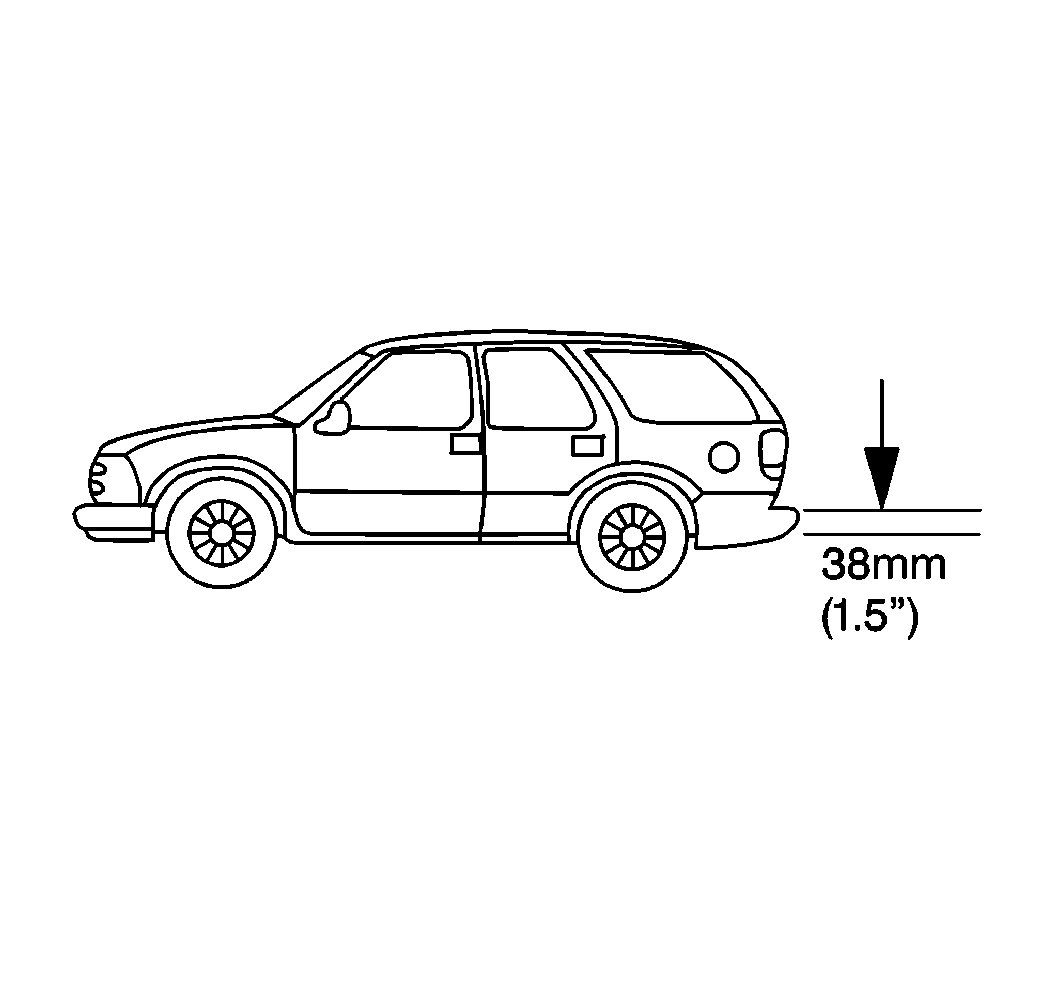Z Height
Trim height is a predetermined measurement relating to vehicle ride height. Incorrect trim heights may cause symptoms similar to alignment problems. Check the trim heights when you diagnose steering or vibration complaints.
The Z dimension measurement determines the proper ride height for the front end. The Z dimension is different for RWD vehicles and 4WD or A4WD vehicles. The 4WD and A4WD vehicles have different points of measurement to determine Z height. Use the torsion bar adjusting arm in order to adjust Z height. RWD vehicles have no adjustment and could require replacement of suspension components.

On RWD vehicles, measure Z height from the center line of the bolt of the front lower control arm down to the lower inboard corner of the ball joint. Trim all Z heights at 67.0-79.0 mm (2.6-3.0 in).

On 4WD and A4WD vehicles, measure Z height from the center line of the pivot bolt (1) down to the lowest inboard edge of the steering knuckle (2).

Trim all curb Z heights at 114.0-128.0 mm (4.6-5.0 in). To adjust Z height, turn the bolt that contacts the torsion arm as needed. One revolution of the bolt into the nut increases the Z height by 6.0 mm (0.2 in) (1).
Z Height Measurement
Measure the Z height using the following procedure:
- Lift the front bumper of the vehicle up around 38 mm (1.5 in).
- Gently remove your hands. Let the vehicle settle by itself.
- Repeat the jounce operation two more times for a total of three times.
- Measure the Z dimension.
- Push the front bumper of the vehicle down about 38 mm (1.5 in).
- Gently remove your hands. Let the vehicle rise by itself.
- Repeat the jounce operation two more times for a total of three times.
- Measure the Z dimension.
- Find the average of the high and low measurements. This is the true Z dimension.

Important: True trim height is the average of the high and low measurements.
D Height
The D dimension measurement determines the proper rear end ride height. Even though the D dimension is the same for RWD and 4WD vehicles, the dimension differs between the utility and pickup models. There is no adjustment procedure. Repair may require replacement of suspension components.

All vehicles require a measurement from the bumper bracket down to the top of the rear axle housing tube. Trim Utility D height at 130.8-148.11 mm (5.1- 5.8 in).
Trim Pickup D height at 130.7-161.5 mm (5.1-6.4 in).
D Height Measurement
Measure the D height using the following procedure:
- Lift the rear bumper of the vehicle up around 38 mm (1.5 in).
- Gently remove your hands. Let the vehicle settle by itself.
- Repeat the jounce operation two more times for a total of three times.
- Measure the D dimension.
- Push the front bumper of the vehicle down about 38 mm (1.5 in).
- Gently remove your hands. Let the vehicle rise by itself.
- Repeat the jounce operation two more times for a total of three times.
- Measure the D dimension.
- Find the average of the high and low measurements. This is the true D dimension.

Important: True trim height is the average of the high and low measurements.
